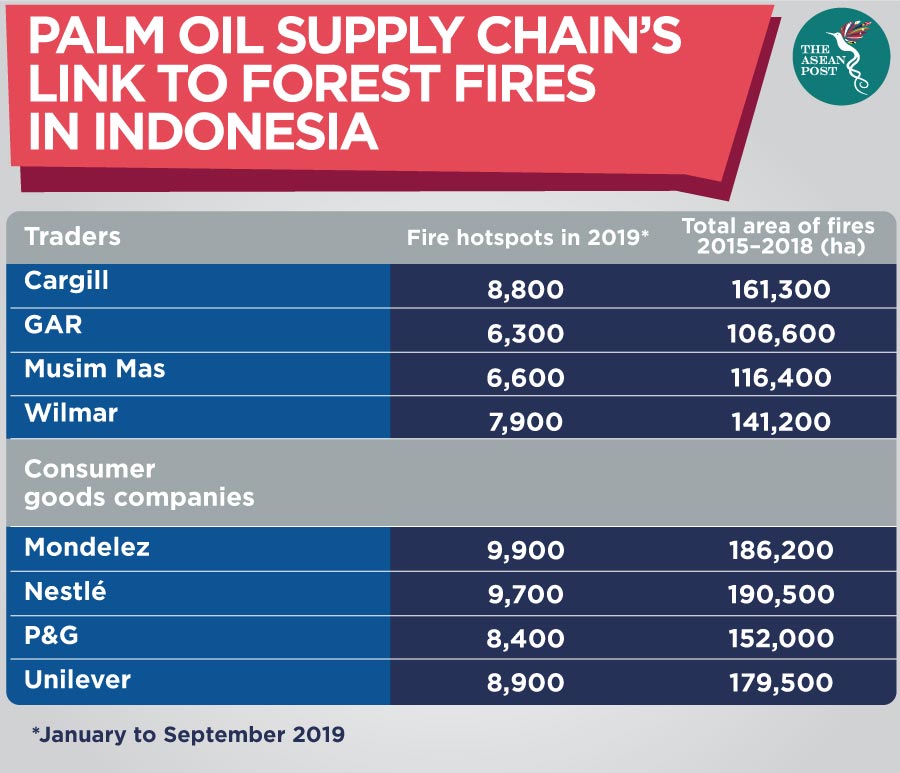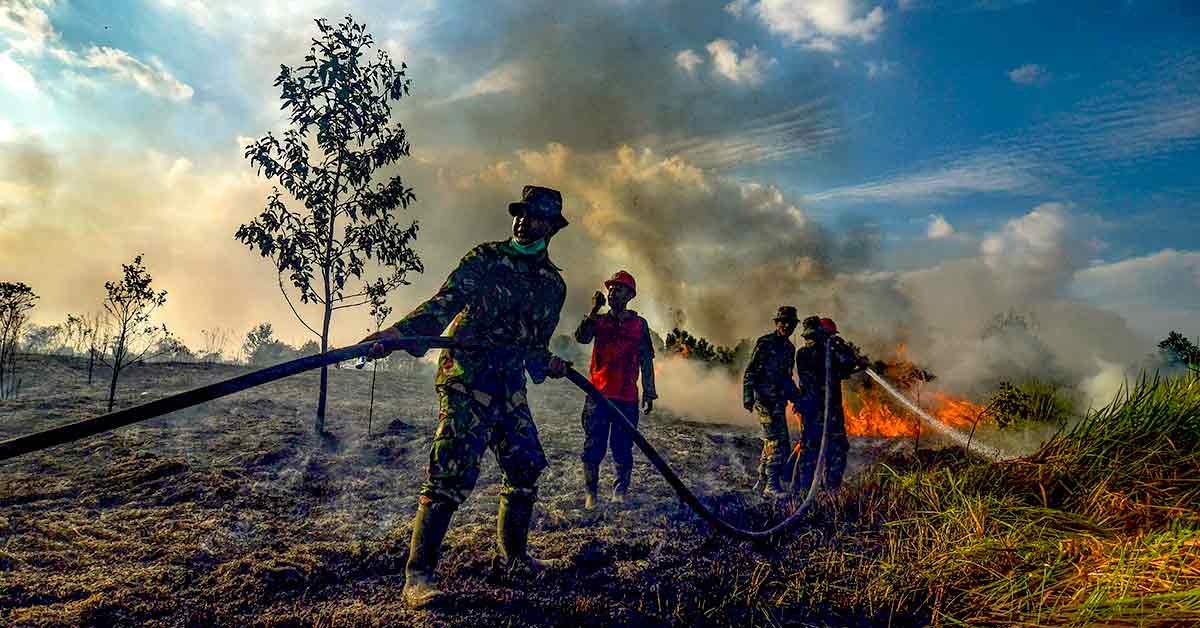The recent announcement that 10 of the world’s largest palm oil producers and buyers are supporting the development of a “new, publicly available radar-based forest monitoring system” may be nothing more than a publicity stunt.
After all, technology is not the answer to solving one of Southeast Asia’s most pressing environmental problems – the effective implementation and enforcement of policies is.
The slash-and-burn method is the cheapest and fastest way to clear land for farming, and over the past two decades, the dry season has seen large parts of ASEAN engulfed in thick haze for weeks as paper and palm oil plantations in Indonesia and Malaysia – the world’s two biggest palm oil producers – indiscriminately burn massive swathes of land.
In a bid to highlight their commitment to counter deforestation, 10 corporations have joined hands to promote the Radar Alerts for Detecting Deforestation (RADD) system – which the group says is the first radar-based monitoring system of this scale that will make deforestation alerts publicly available.
Expanding on existing publicly available monitoring tools that rely on optical-based satellite imagery, RADD can gather forest change information without being affected by cloud cover or sunlight, and its advanced radar and machine-learning methods will further increase transparency of unsustainable and illegal activities in tropical forests.
Preliminary results for Indonesia and Malaysia, which together supply about 85 percent of the world’s palm oil, indicate that the new system can detect tropical deforestation several weeks earlier than optical-based ones.
“The partnership will make it much easier for companies and other stakeholders to see deforestation happening in near-real-time and with greater accuracy,” stated a press release from the group. “With this information, they can more quickly mobilise follow-up actions on the ground and work to improve the sustainability of commodity supply chains.”

Technology to the rescue?
While hardly ground-breaking, the technology behind RADD has improved significantly over the last decade to the point where deforestation can now be detected on a weekly basis.
Once the RADD system is complete in two years’ time, the alerts – and the methodology behind it – will be available on Global Forest Watch (GFW) and Global Forest Watch Pro, two platforms hosted by global research organisation, the World Resources Institute (WRI).
But as WRI themselves note, there has been little research into how such information is used for on-the-ground decision making.
Mikaela Weisse, who leads GFW’s strategy and partnerships for satellite-based forest monitoring, co-authored a report which stated that while technical limitations to satellite monitoring in Peru – such as delays in detection due to cloud cover – have hampered their use in some situations, corruption and the lack of clarity about agency responsibilities are bigger challenges.
However, the general consensus among the heads of sustainability from the 10 firms was that the new technology will enhance their ability to act on deforestation alerts – and they made no mention of other equally key issues such as land ownership, enforcement or corruption.
“The lack of technology is not a barrier that prevents companies from cleaning their supply chains,” Annisa Rahmawati, senior forest campaigner at Greenpeace Indonesia, told The ASEAN Post. “The absence of transparency regarding land ownership and control, starting with the producer groups, is.”
Calling for traders and consumer goods companies to act immediately to make public the maps showing the locations of the landholdings of palm oil producing groups, Annisa says this will ensure that monitoring of the producer group’s supply chains covers the full extent of their land banks.
Companies must confirm that the subsequent disclosures give a full and clear picture of the producer groups in their supply chains and remove producer groups from their supply chains that they cannot demonstrate are free from fire, deforestation or other environmental damage.
Palm oil producers must cut their ties with problematic suppliers if they are found to be engaging in unsustainable practices. Apart from deforestation, palm oil companies have also been accused of forced labour, withheld pay and dangerous working practices.
“No additional technology is needed for this,” she stressed. “Technology is one thing, implementation is another.”
Implementation and corruption
When it comes to the implementation of policies in the palm oil sector, regional governments have been found to be just as inept as palm oil companies – evident in the toothless ASEAN Agreement on Transboundary Haze Pollution (ATHP) which was signed in 2002 but only ratified by all member countries in 2015.
As Dr Helena Varkkey, Senior Lecturer at the Department of International and Strategic Studies, University of Malaya pointed out in her 2016 book titled, “The Haze Problem in Southeast Asia: Palm Oil and Patronage”, while most of ASEAN’s initiatives regarding haze have been useful in generating massive amounts of information, not much has been done in terms of effective implementation of mitigation activities.
Researchers such as Dr Varkkey have noted that the close links between governments and palm oil companies mean the latter continue to blatantly burn their lands without fear of prosecution.
Dr Varkkey has also argued that Malaysian and Singaporean oil palm companies have been able to effectively insert themselves into local patronage networks in Indonesia, resulting in weak enforcement of environmental policies.
“Combating corruption needs a transparent system and good governance,” said Greenpeace’s Annisa. “The collusion between governments and companies is massive… They are profiting themselves and damaging our forests and environment.
Clearly, a tougher stance on the ground is more important than any fancy technology in the sky when it comes to cleaning up the palm oil industry.
Related articles:
